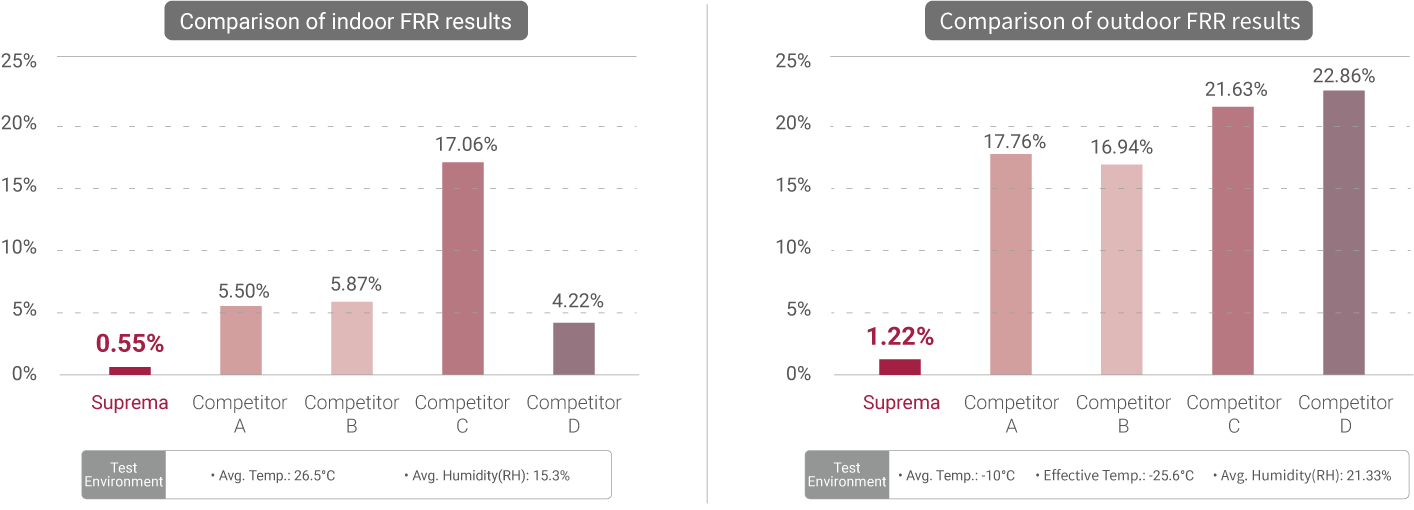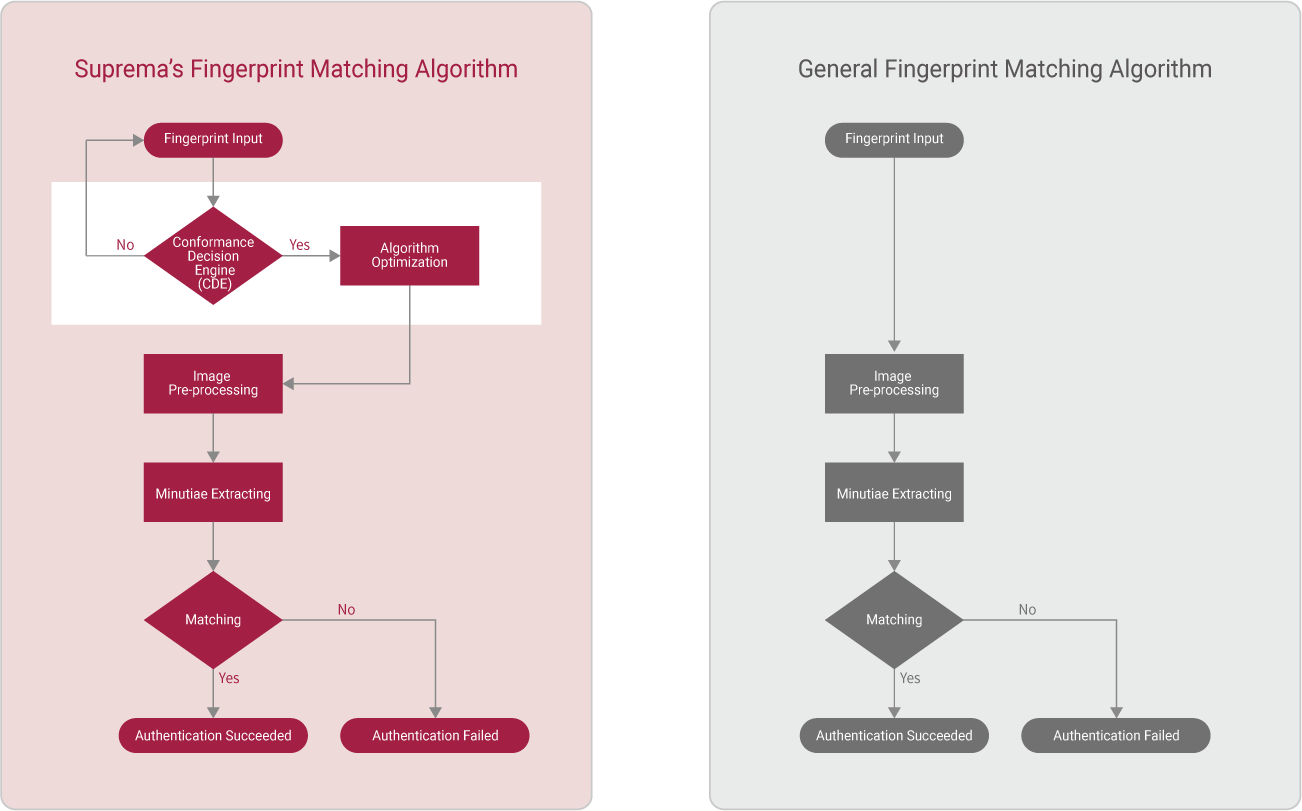Suprema's fingerprint recognition algorithm against dry fingerprints
“Suprema provides performance that is about 31 times more accurate than competitors”
 In the winter in South Korea, the temperature falls, and it becomes windy, so the humidity in the air drops consequently. As a result, your skin becomes dry, leading the oils and moisture in it to dry. Therefore, in winter, even correctly touching the surface of a fingerprint sensor with your fingertip can generate a dry fingerprint, which cannot be correctly recognized.
In the winter in South Korea, the temperature falls, and it becomes windy, so the humidity in the air drops consequently. As a result, your skin becomes dry, leading the oils and moisture in it to dry. Therefore, in winter, even correctly touching the surface of a fingerprint sensor with your fingertip can generate a dry fingerprint, which cannot be correctly recognized.
In addition to being affected by seasonality, dry fingerprints can also easily occur in geographically dry regions, such as South Africa, Australia, and the Middle East. The occurrence of dry fingerprints is also very dependent on the individual’s occupation and age. For example, dry fingerprints can occur with people who are required to frequently disinfect their hands at work, such as doctors and workers who handle wood, leather or metal, as well as with elderly people and people with dry skin (xeroderma).
When a dry fingerprint occurs, the person’s fingertip hasn’t properly come in contact with the surface of the fingerprint sensor, and as a result, a blurry fingerprint image is generated. A blurry image of a fingerprint makes it more difficult to extract the fingerprint’s minutiae than a normal one and is more likely to result in the extraction of false minutiae. Therefore, dry fingerprints eventually lead to a higher false rejection rate (FRR).
Even when there is a dry fingerprint problem, you can temporarily eschew it by blowing on your hands or applying hand cream to the fingers before going through the fingerprint authentication process. However, such a measure is not a fundamental solution and therefore cannot guarantee the proper performance of fingerprint recognition. However, with Suprema's latest fingerprint sensor and algorithm, you can resolve such problems altogether.
Outstanding indoor and outdoor authentication performance
In either cold or dry environments, the state-of-the-art fingerprint sensor applied to Suprema's products demonstrates performance that far surpasses other companies’ fingerprint sensors. This difference in performance is not just a palpable kind. With its state-of-the-art fingerprint sensor and superlative algorithm, Suprema provides performance that is about 31 times more accurate in indoors and about 19 times more accurate in outdoors than other companies’ products.
Comparison with other fingerprint matching algorithms
Unlike the ordinary fingerprint matching algorithm, with Suprema's fingerprint matching algorithm, inputted fingerprint images are analyzed first by the Conformance Decision Engine (CDE), instead of sending them directly to the pre-processing stage. This Conformance Decision Engine (CDE) helps you obtain the correct fingerprint images even if fingerprints have been inputted in the wrong manner, by identifying instances such as when the fingerprint inputted has been produced by rubbing the surface of the fingerprint sensor with the fingertip. In addition, the acquired fingerprint images are analyzed based on deep learning technology and subsequently go through the algorithm optimization stage. This enables far faster provision of feedback to the user without having to go through the matching stage, because the fingerprint images are analyzed in advance, prior to the image pre-processing stage.
Suprema's fingerprint matching algorithm makes it possible to obtain high-quality fingerprint images because it effectively controls the fingerprint sensor and algorithm based on the Conformance Decision Engine (CDE), and for that reason, it is also excellent at eliminating false minutiae. Equipped with optimized algorithms and superlative computation performance, all Suprema products can complete fingerprint matching in less than a second even for dry fingerprints and demonstrate effective and reliable fingerprint matching performance in a variety of environments.



